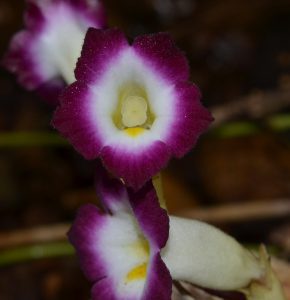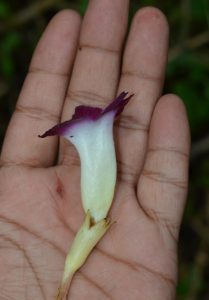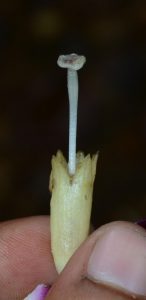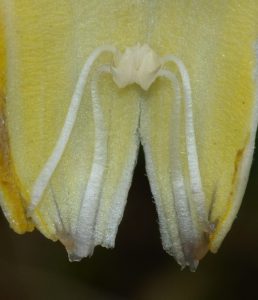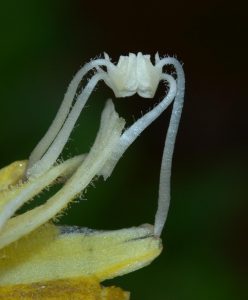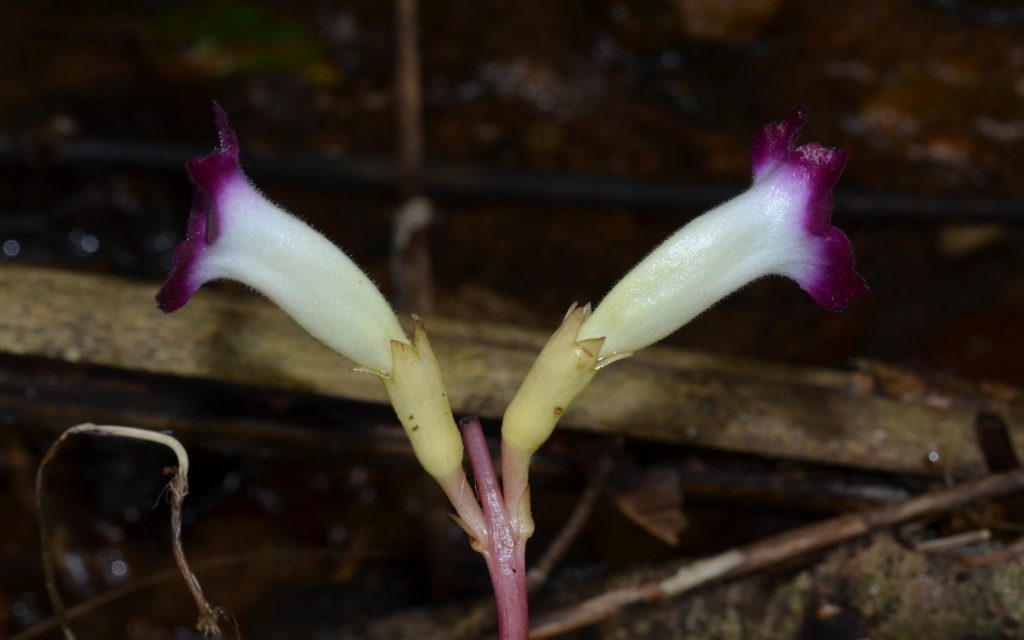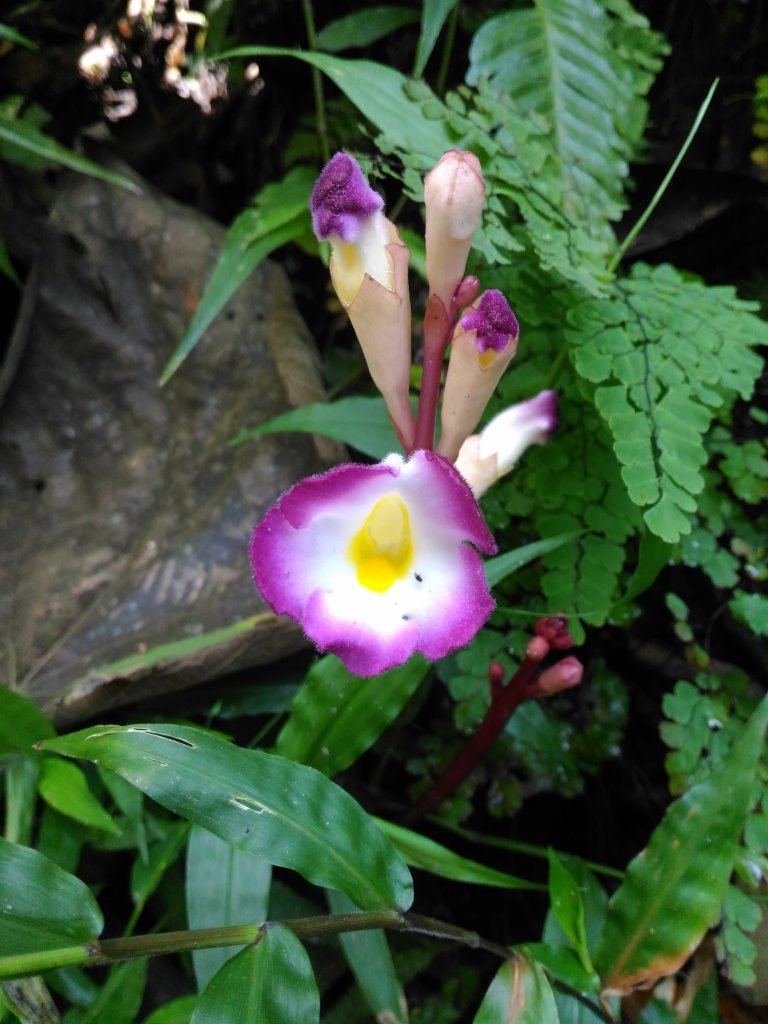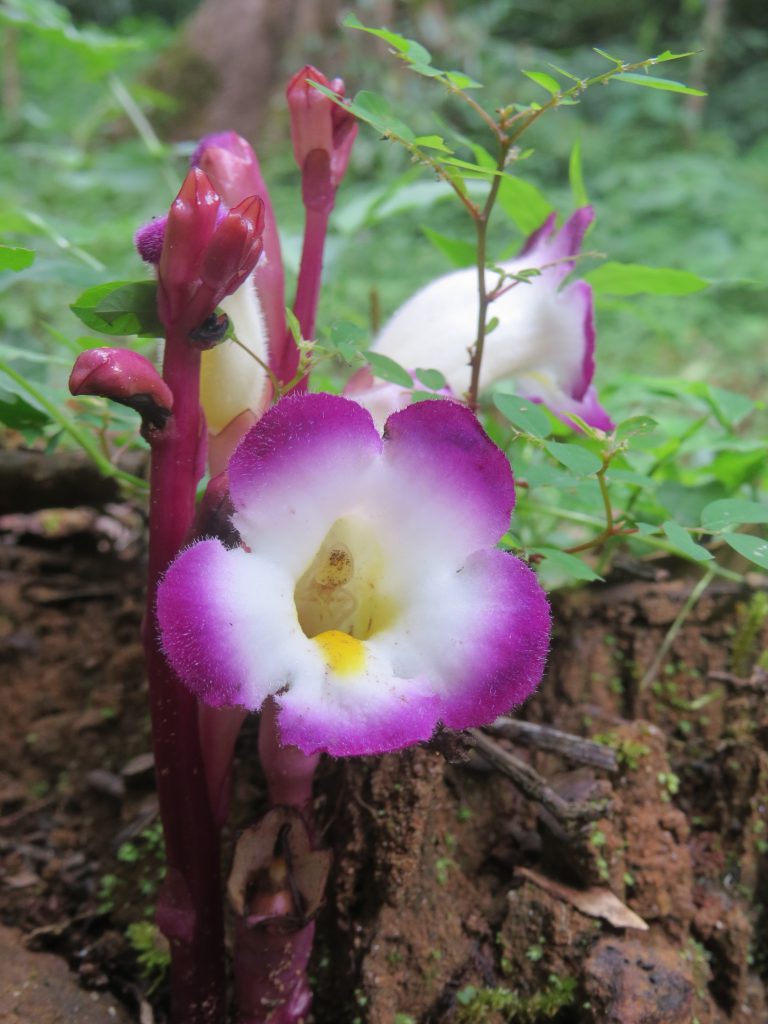Christisonia tubulosa
The Magenta Ghost Flower is a parasitic plant that is endemic to Southern Western Ghats, which means it is not found in any other part of the World. It grows as a root parasite and completely lacks leaves and chlorophyll. So, it solely depends upon other plants for nutritions and steals it from other plants.
Taxonomy
| Kingdom: | Plantae |
| Division: | Angiosperms |
| Sub-Division: | Eudicots |
| Class: | Asterids |
| Order: | Lamiales |
| Family: | Orobanchaceae |
| Genus: | Christisonia |
| Species: | C. tubulosa |
Habitat
Christisonia tubulosa is endemic to Anamalai Hills in the Southern Western Ghats. It is found in the Shola Forests of altitutes ranging from 1000 to 2000 meters above sea level.
Identification
It can be difficult or nearly impossible to find this plant if it is not in flowers. It grows as a parasite mainly on grasses in Evergreen forests and Shola forests. It mostly flowers during the monsoon season and one can spot these plants in the forest floor by a mere glimpse. It can be identified by the particularly bright colored flowers emerging from the forest floor.
The flower is tubular, white in color with bright magenta border. The interior of the flower will be bright yellow and the white stigma is prominently visible inside the flower.
Fleshy leafless parasitic herbs, 15-26 cm high. Stem scaly, simple or branched from the rootstock. Scales 2-3 mm long, ovate-lanceolate. Inflorescence terminal, lax racemes; pedicels 1-2.5 cm long. Calyx tubular; tube 0.8-1.2 cm long; lobes obtuse. Corolla funnel-shaped, purplish white; tube 2.5-4 cm long, 2-lipped, 5-lobbed; lobes orbicular, subequal, lower lip yellowish at throat. Stamens 4, didynamous, connivent in pairs; anthers 2-celled, 1 cell perfect, other sterile, spurred. Ovary 1-celled, ovules many; style slender; stigma peltate. Capsule 0.8-1.2 cm long, ovoid. Seeds many, minute, calyx tube persistent in fruits. – Eflora of India Website
First sight
The Magenta Ghost Flower was first found and described in 1835 by Robert Wight, a renowned British taxonomist who worked in South India. He was a Scottish surgeon in the East India Company, whose professional career was spent entirely in southern India, where his greatest achievements were in botany. As a taxonomist, he described 110 new genera and 1267 new species of flowering plants!
Later, George Gardner, who became the superintendent of the Peradeniya Garden in Sri Lanka, named the genus “Christisonia” after Sir Robert Christison, Professor of Medicine at Edinburgh. He was also a school friend of Robert Wight.
More images 🙂

